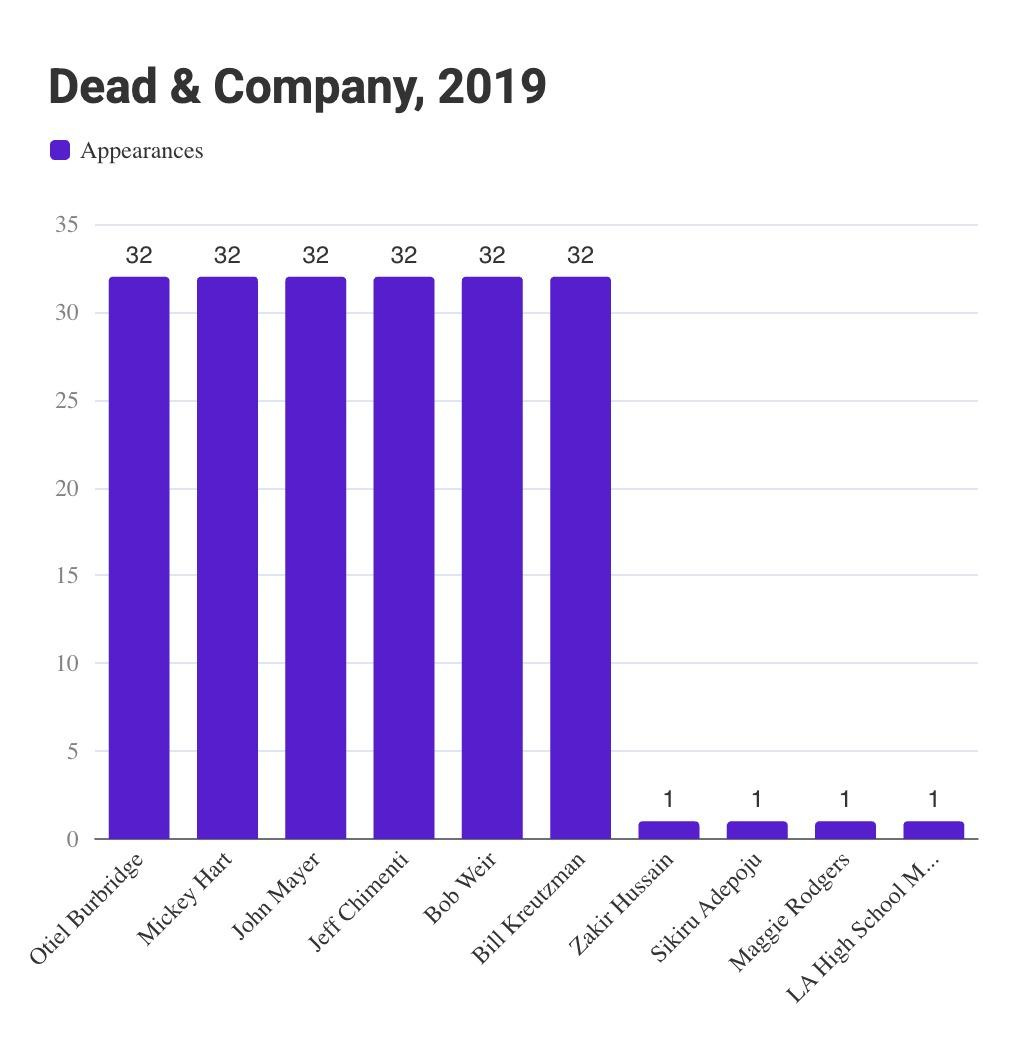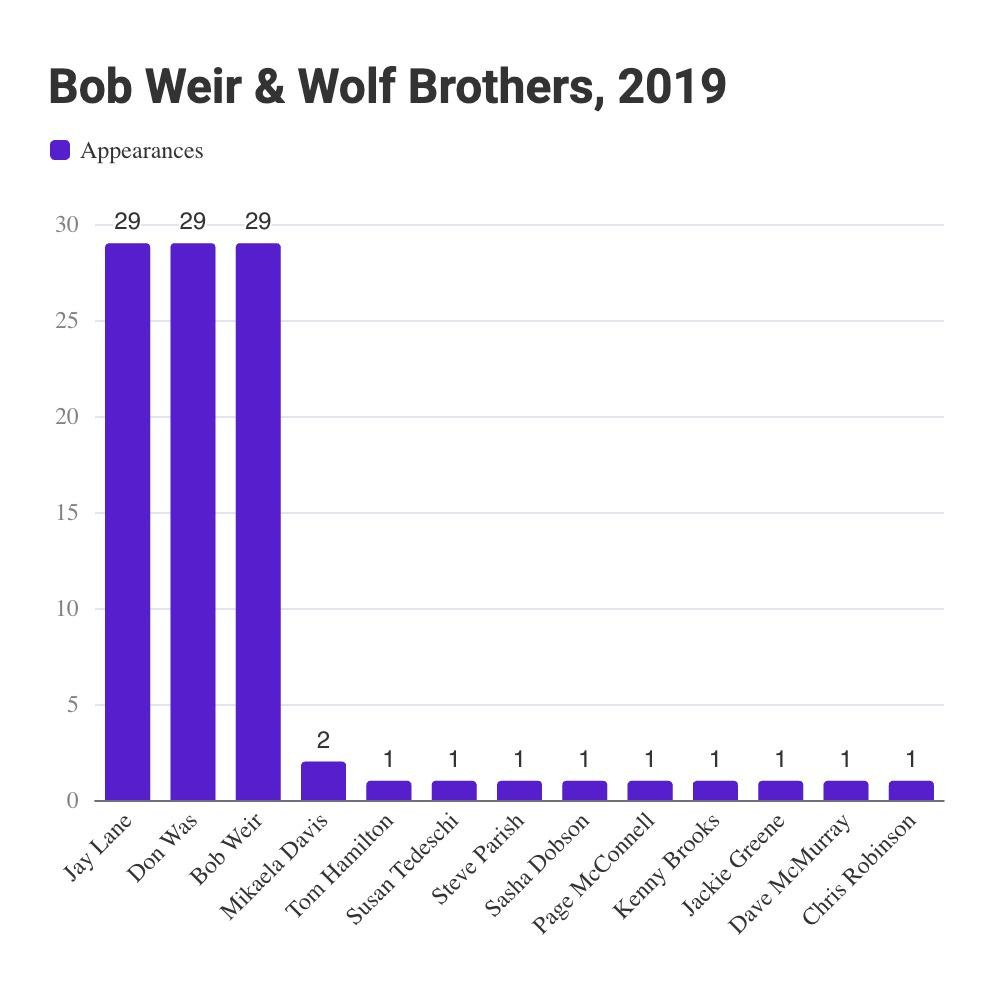summertime study
Phil Lesh & the Future of the Grateful Dead Songbook (part 1)
We’ve been wanting for a while to share the outlines of (and data from) a talk we gave at the 2025 Grateful Dead Studies Association meeting in April. The questions we came home with feel especially pertinent as the 60th anniversary approaches, bringing with it Dead & Co’s outrageously expensive Golden Gate park shows, scheduled during the Days Between—which already included the annual (free) Jerry Day and a 3-day run of Melvin Seals & JGB / Axial Tilt. The pregame and afterparty announcements keep coming, including, most recently, the Heart of Town shows hosted by Grahame Lesh & Friends featuring a huge lineup of musicians who played with Phil Lesh & Friends over the years. Also recently announced: a mini version of the Las Vegas Sphere (three of them?) coming to San Francisco soon. This is the first of three posts; parts two and three can be found here and here.
The seeds of this talk started with the Phil Lesh & Friends 2022 Stern Grove performance of “Somewhere Over the Rainbow” featuring Stanley Jordan on guitar, Katie Jacoby on violin, and Mikaela Davis on harp. It wasn’t the first time that Jordan and Lesh played “Somewhere Over the Rainbow” together (here they are at the Roseland Ballroom in 2012.) But it was a first for us. Had we encountered that Stern Grove clip a decade ago, we might not have recognized the cover or the lineup as contiguous with what we understood as the Dead—although we do now. So do others, we suspect, who were also blessed to have experienced Phil Lesh & Friends shows during the last decade of his life.
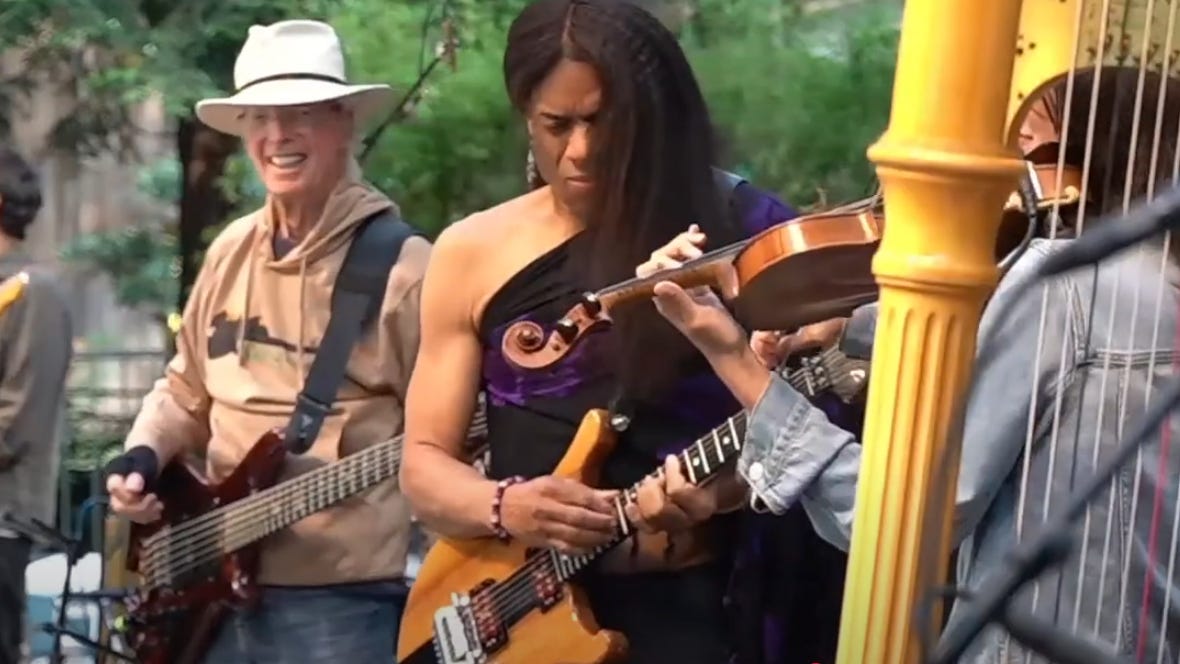
Which leads us to one of our premises. Depending on you look at it, this could be a provocation or a statement so obvious it goes without saying: the Grateful Dead is alive and well, well beyond the corpus of its concert recordings. By ‘alive and well’ we mean the process that philosopher Emanuele Coccia describes in his 2021 book Metamorphoses: every living being is a huge recycling operation carried out on the lives that preceded it. If we consider the Dead a collective being, and we do, the same principles apply. Everything that lives, lives by metamorphosis: a transformative repetition of what has gone on before. That’s a succinct way of saying what many before us have noticed: the Dead’s acid-drenched improvisational approach transformed what had gone on before, from the blues to bluegrass, country, jazz, R&B, and folk, without ever claiming ownership of the materials they recycled themselves from.
We are witnessing, in this moment, a metamorphosis of the Dead at a scale both immense and local—a form of cultural transmission which suggests its durability as an embodied somatic experience that future generations will continue to be able to access, whether through augmented reality experiences such as the Sphere or one of the many bands that either cover the Dead’s songbook or include musicians who played with or have been mentored by original band members. When Clive was a kid he never would have imagined that the Dead would be so popular that it would have a massive residency at someplace like the Sphere. One of our questions, then, is what the embodied experience of the Grateful Dead will be constituted by in the future—which forms of life that it recycled itself from, will continue to be recycled?—especially as we know that the original band members will not be with us forever.
It’s a question that feels especially poignant with Phil’s passing last fall. Just as his ‘recycling operation’ exchanged matter with Beethoven and John Coltrane and Karlheinz Stockhausen, Phil’s life became that for others. It wasn’t until their 2012 encounter that Jordan, for instance, felt confident enough to play the catalog, as he would go on to do with Phil & Friends more than 50 times, eventually releasing his own project, Stanley Plays the Dead.
This fractal instantiation—JRAD plays fast, DSO plays historic setlists, haptic technology built into seats at the Sphere literally allow Mickey Hart to play Drums and Space throughout the viewer’s body, Melvin Seals keeps the JGB flame alive—is the product of unpredictable factors, many having to do with new technologies. It was a Pandora algorithm, after all, that played “Althea” for John Mayer in 2011. Our perspective, however, has more to do with living in the Bay Area where Phil Lesh anchored not just a robust scene but an expansive approach to the songbook and its musical substrate.
Stern Grove wasn’t the only time we were struck by the diversity and variety of musicians onstage with Phil Lesh & Friends. Over and over and again we were surprised and delighted by what we saw (and heard) at the Warfield and the Fillmore; at Terrapin Crossroads and the Sunday Daydream shows produced by the Leshes after the closure of their venue. The musical world that Phil built continues on as the Terrapin Roadshow, produced by the indefatigable Paper Moon team (shout out to Matt, Luna, and the rest of the crew!) up to and including the inaugural June 2024 shows that Clive had the pleasure of hosting at Cal Shakes / The Bruns Ampitheater. The stage picture we witnessed in these locations was very different from the hundreds of Grateful Dead shows that Clive started going to in the late 1970s and the handful that Stephanie caught in early 90s, and certainly different from Dead & Company stadium shows over the last decade.
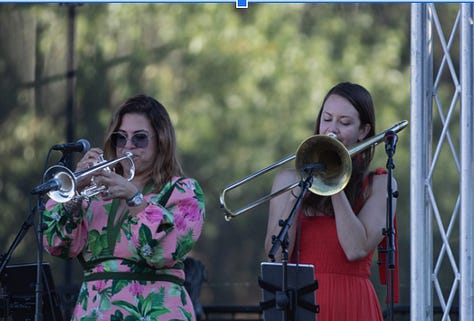
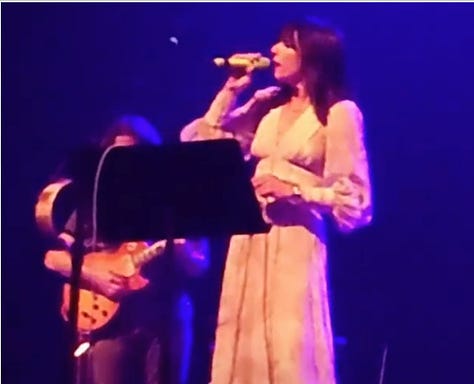
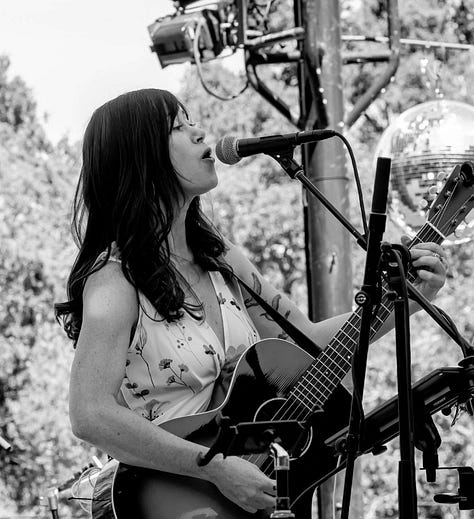
In order to better understand what we were seeing onstage, we set out to collect and analyze some data. Was the group of musicians we saw play with Phil Lesh & Friends as radically heterogeneous as it appeared, and if so, how did it compare to the rest of the Dead galaxy? Our methodology was inspired by Stephanie’s research with Claire Grossman and Juliana Spahr, which, similar to Dead Studies, involves studying literary ecosystems they are also part of. In 2022 they published a hand collected dataset of literary prizewinners and judges between 1918 and 2020; subsequently that data informed their writing about prestige literary culture and the history of racially segregated funding streams for US literature. They have found again and again that the data reveals something they had a sense of as poets but couldn’t quite see from their embedded perspective in literary scenes.
We began by looking at personnel, that is, who was onstage, and then at what they played, although, of course, our questions ultimately have as much to do with the crowd as the band(s). Collecting this data was challenging so we focused on one year, 2019, for several reasons: Terrapin Crossroads was still open and going strong, the Covid pandemic was a year away, and the three bands we collected data for—Phil Lesh & Friends, Dead & Company, and Bob Weir & Wolf Bros—were all touring.
We began by assembling a list of all 2019 shows using the Dead & Company website, setlist wiki, and intensive web searches. We then did the same for personnel. This was done by hand; even if we had the coding skills to automate the process there’s no single location that houses this information. Much of the data came from other Deadheads, that is, the people who upload recordings and set lists, and from music journalists. We relied on Deadheadland, jambands.com, Jambase, Live for Live Music, Relix, Terrapin Nation, and, of course, the Internet Archive.
Here is what we found (bear with us as some of this is incredibly obvious, but gets more interesting in part 2 when we look at race, gender, and age demographics and in part 3 when we analyze the songs played most often by each band.)
In 2019, Dead & Company played 32 total shows featuring 10 unique musicians and singers with a stable touring lineup of Oteil Burbridge, Jeff Chimenti, Mickey Hart, Bill Kreutzman, John Mayer, and Bob Weir. They didn’t play festivals and had no opening acts (Dead & Company tend not to have them). The small number of guests in 2019 included, notably, the LA High School jazz band who sat in on “A Love Supreme” at their June 4 Hollywood Bowl show.
Here is the Dead & Co personnel data represented as a bar chart:
In 2019, Phil Lesh & Friends played 41 total shows featuring 53 unique musicians and singers. This includes shows billed alternately as Phil Lesh & Friends / Phil Lesh & The Terrapin Family Band, along with free Phil the Air sets he played at Terrapin Crossroads occasionally, as the opening act for other bands. It does not include every time that Phil sat in with whoever was playing at the Terrapin bar (something both he and Bob Weir both did often.)
Phil was still touring; we were surprised to see that only 15, or 37%, of these shows were at Terrapin Crossroads; the rest were on the road. He played many festivals, some of them iconic, such as the Oregon Country Fair in Veneta. Some memorable collaborations enabled by festival appearances included Alison Krauss singing “Morning Dew,” Sheryl Crowe and Audley Freed joining in for “Not Fade Away” and The Terrapin Family Band sitting in with Willie Nelson Family for a medley of “Will The Circle Be Unbroken” and “I’ll Fly Away.” Phil had to cancel his scheduled fall shows due to back surgery; his last 2019 appearance was technically in November, when he sat in on the outdoor stage at Terrapin reading Are You My Mother? to a group of children who probably included his grandkids.
Here is the Phil Lesh & Friends 2019 personnel data represented as a jokey bar chart; there are so many musicians it’s impossible to read:
If we narrow it down to those who played 4 or more times, it starts to get more legible but it’s still a large group:
Lastly, we looked at Bob Weir & Wolf Bros, his side project that tours when Dead & Company isn’t on the road. In 2019, the Wolf Bros played 29 total shows featuring13 unique musicians. (This means that Weir played a total of 61 shows if we add these to the Dead & Co stats.) The Wolf Bros tour begins to look more like Phil & Friends. Even though it features a stable lineup of Weir, Jay Lane, and Don Was, it includes more guests and some festival appearances. Here it is as a bar chart:
Next up: we visualize these three band networks as social networks including racial, gender, and age demographics.




